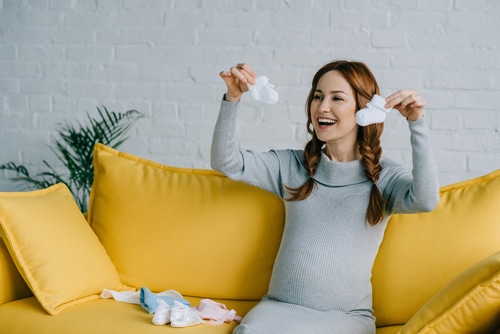Many women trying to conceive are confused about their period, the 28-day cycle and when they’re most likely to get pregnant.
When a couple is planning to have a baby, understanding the 28-day cycle can mean the difference between success and disappointment, says Gloria Richard-Davis, MD, Ob/Gyn, fertility specialist and author of Planning Parenthood.
Timing is a critical factor when you’re trying to get pregnant. As more and more women are waiting to conceive until later in life, we have seen an uptick in fertility tracking technologies- from apps to wearables that help women pinpoint their most fertile days. However, it’s important to supplement an app or fertility monitor with simple ovulation tests to ensure the most accurate identification of fertile days.
Each month, the body prepares for ovulation, or the release of an egg from the ovaries. The cycle begins on the first day of menstruation and serves as a detox to dispose of old uterine lining and make way for the next cycle. Day one, the first day of menstrual bleeding or spotting, represents a new opportunity to conceive. Days eleven-sixteen are the optimal time to kick-start baby-making efforts as ovulation is nearing.
A simple, at-home ovulation predictor kit like First Response Ovulation Test Kit will identify your two most fertile days by pinpointing a surge in the luteinizing hormone (LH) that triggers ovulation. Women can maximize their chances by having sex within 24-36 hours after detecting this luteinizing hormone (LH) surge. If a sperm successfully fertilizes the egg, conception occurs.
The lining of the uterus thickens between day seventeen and twenty-four, and if the egg and sperm have successfully met, the fertilized egg will soon implant or attach to the uterine lining (endometrium). The end of the cycle is near, and PMS symptoms may present themselves if pregnancy has not occurred as progesterone peaks around day twenty-one or twenty-two.
Try the First Response Triple Check at home fertility test around day twenty-three or twenty-four if pregnancy is suspected, but a period hasn’t yet been missed. It includes one early-result test that can indicate pregnancy six days before a missed period, a digital test to follow for consumers who like to see a yes/no answer, and a rapid result test to take on the day of a missed period.
Other important considerations to keep in mind when trying to conceive include:
- Keeping a healthy, well-balanced diet and practicing stress-relief.
- Prenatal vitamins with sufficient folic acid like prescription OB Complete are critical even before trying to conceive to ensure a healthy pregnancy journey for both mom and baby.
- Vaginal dryness is twice as common in women who are trying to conceive due to the stress of ‘sex on demand’. But, traditional lubes can harm sperm motility which is why using a fertility-friendly lubricant like Pre-Seed is crucial as it encourages sperm to swim freely and meet an egg.
Don’t guess at your fertile window when it’s so easy to identify the best time to conceive. Every woman is born with millions of immature eggs, but the quantity and quality of remaining eggs, known as the ovarian reserve, decreases. If you’re not able to get pregnant, your ovarian reserve may be low. Tracking ovulation can be challenging as well, if your menstrual cycle is irregular. Remember to note your cycle and its symptoms so you can discuss concerns with your medical provider and schedule a preconception checkup.


No Comment